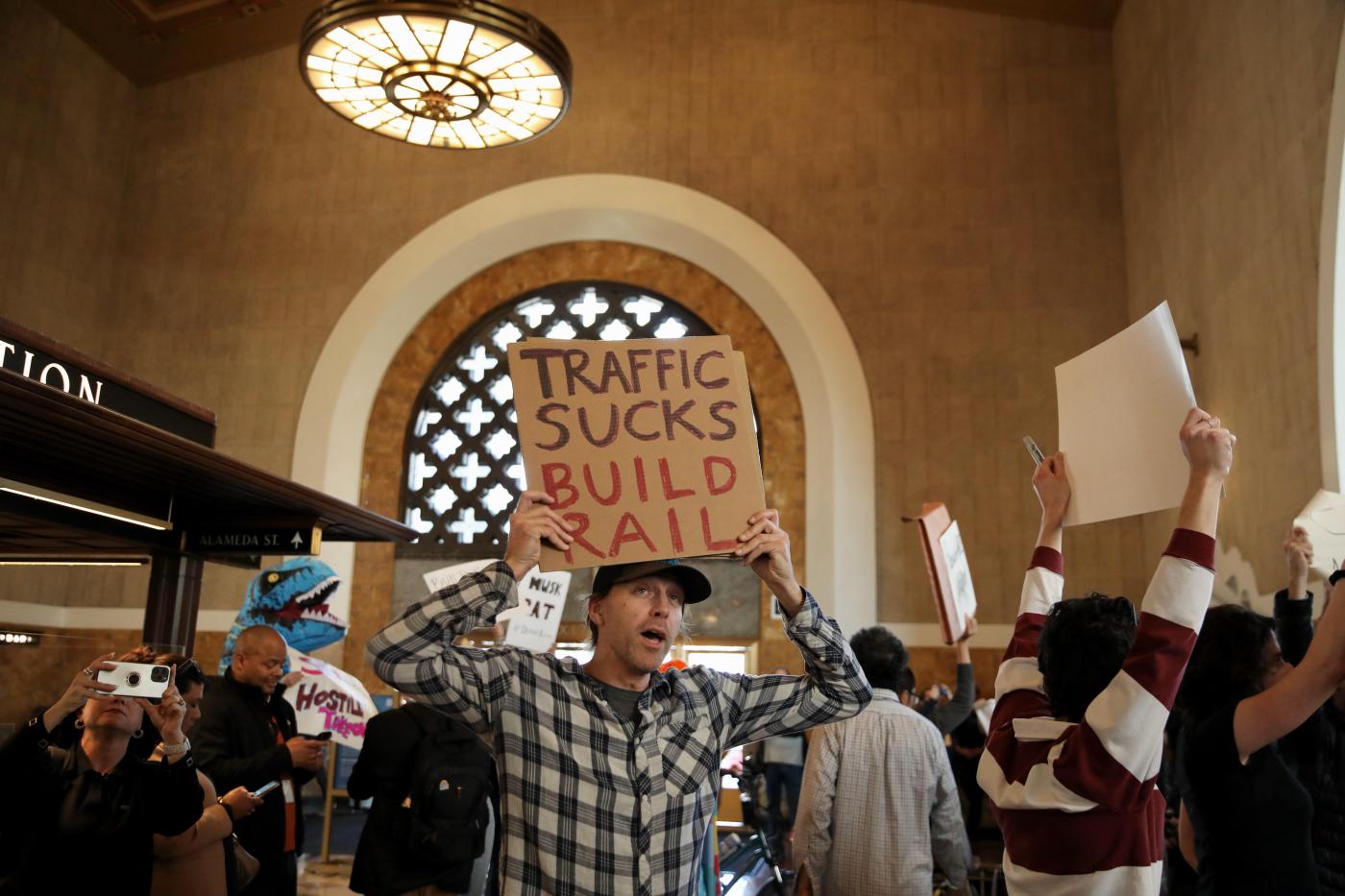
For years now, California’s high-speed rail project has drawn torrents of criticism, much of it from conservative lawmakers in Sacramento and Washington, D.C., over its escalating costs and failing schedule.
None other than President Donald Trump has blasted the ambitious statewide electric train. In particular, Trump has cited how HSR has gotten way behind the original schedule it set for itself. To back up his words, Trump recently cancelled $4 billion in federal funding that was set to support California’s project.
“This project was Severely Overpriced, Overregulated, and NEVER DELIVERED,” Trump wrote on his social media platform Truth Social. “Thanks to Transportation Secretary Sean Duffy, not a SINGLE penny in Federal Dollars will go towards this Newscum SCAM ever again.” “Newscum” is Trump’s moniker for Gov. Gavin Newsom.
Related Articles
California high-speed rail boss courts private investors with proposals for AI, energy revenue
Latest line: A good week for High Speed Rail CEO, a bad week for home insurance buyers
Mathews: Trump’s opposition to California high-speed rail is a blessing in disguise
A new plan for California’s high-speed rail
Letters: Copying Texas GOP’s power grab will cost Democrats voters’ trust
Trump could well be right about one aspect: overregulation of the project. A recent study demonstrates how California’s infamous government and environmental reviews themselves have caused major delays and big cost overruns for high-speed rail.
That is the headline finding of a study done by Circulate San Diego, a nonprofit group that advocates for public transit projects.
Delay by permit
The overregulation has come in the form of local governments along the route the high-speed trains are to travel.
Also helping slow the wheels can be utilities, water districts and county and state agencies, the study says. It refers to such entities as third parties whose permits and approvals must be secured before work can be done.
“This report focuses on the many third-party permitting challenges facing transit that are arbitrary, excessive and avoidable,” the study notes.
Two examples in the report show how local governments in the San Joaquin Valley jammed up the bullet-train work.
The city of Wasco, population 27,000 northwest of Bakersfield in Kern County, is on the high-speed rail route.
Shortly after the rail authority awarded a construction contract for 22 miles of track in Tulare and Kern counties, rail authority officials asked Wasco if 6th Street could be permanently closed at the rail line. A tentative agreement was reached with the Wasco City Council, but it wanted a permanent deal in writing. That was never finalized.
Instead, the relationship between the rail authority and Wasco leaders got worse. It took the rail authority five extra years, 37 contract change orders and an extra $26 million to satisfy the city’s demands. What was supposed to be a three-year window for construction dragged out for seven years.
Farther north, conditions put on the route by Madera County officials added more than $30 million in unexpected costs as well as delays in building. This came despite the stretch being one of the most rural spots along the route.
When projects get caught in long delays, public confidence can wane. Yet as the case studies show, some of the delay hurting the bullet train has not been its own doing, but that of local governments.
“For California to secure abundant public transit, it must empower transit authorities to build,” the study says.
Despite the delays, public interest in high-speed rail remains strong. According to a poll done for the U.S High-Speed Rail Association and released in June, 67% of California voters still support the project.
Clear the tracks
One state senator is proposing a way to get the rail project completed faster. Sen. Scott Wiener of San Francisco has authored SB 455. It would put local governments, telecommunication companies and utilities on deadlines to review permit requests by the rail authority. If a local government or other third party fails to act with due haste, the rail authority can issue its own approvals so construction can begin.
“Public transportation is critical to California’s future, but a broken permit process has eroded Californians’ trust in transit agencies’ ability to deliver projects on time and on budget,” Wiener said in a statement. “We need to rebuild that trust to deliver the affordable transportation and pollution reductions that public transportation makes possible. That starts by fixing our Rube Goldberg permitting process.” Goldberg was a cartoonist whose works featured overly complicated machines trying to do simple tasks.
High-speed rail is charged with building a 220-mile route connecting the Bay Area to Los Angeles. Work began in the San Joaquin Valley first. Ultimately the project would cover 800 miles and stretch to San Diego and Sacramento. Trains would travel at speeds more than 200 mph.
Grasp the potential
Young Silicon Valley families could chose to live in Fresno where home prices are lower and schools are solid. Dad or mom could hop on the train in the early morning to ride to San Jose for work at Apple or Google before returning that evening. These transplants would demand good restaurants and culture, and would have the discretionary income to support such endeavors.
Republican lawmakers in particular need to grasp this potential.
It is illuminating that some of them call for redirecting monies from high-speed rail to fixing roads. Such backward thinking prolongs air pollution from motor vehicles, unlike the clean travel of the electric train. The Valley is one of America’s most polluted air basins.
The Legislature should pass Wiener’s bill to allow the authority to get started on construction when third parties don’t grant permits in a timely way. It is time to end the stranglehold of overregulation.
Tad Weber is a Fresno Bee columnist. ©2025 The Fresno Bee. Distributed by Tribune Content Agency.